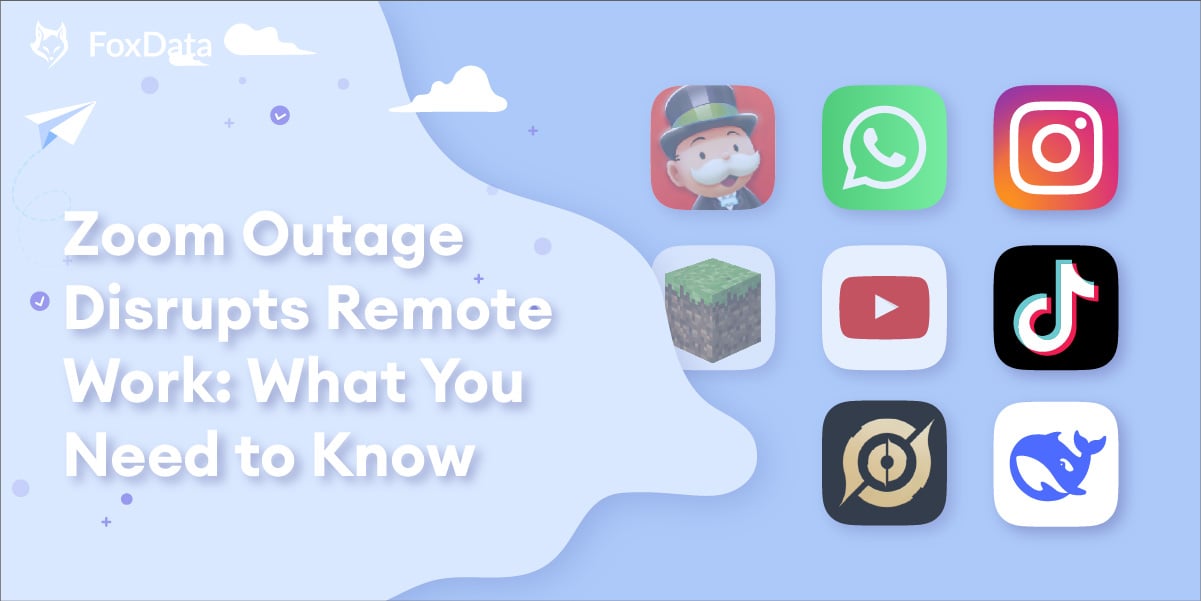The popular video conferencing platform Zoom experienced significant outages recently, causing disruptions for users worldwide. As a vital tool that has become synonymous with digital communication, especially during the pandemic, any issues with Zoom can be a major inconvenience for both businesses and individuals. The outage, which was reported by Downdetector and confirmed by Zoom, involved over 60,000 incidents around 3 p.m. ET, affecting users' ability to log into meetings, access the platform, and modify settings.
Understanding the Impact
Zoom has become an integral part of how businesses, schools, and individuals connect, particularly since the 2020 pandemic when remote work and learning became the norm. The platform facilitates daily meetings, virtual classrooms, and remote collaborations, playing a key role in maintaining business continuity and educational engagement during challenging times. As offices have gradually reopened, the reliance on Zoom has somewhat decreased but it still remains crucial for remote working teams and client meetings.
Users encountered various issues during the outage. Some were unable to join meetings, while others couldn't even access the website. Interestingly, while some functionalities like phone calls remained operational, video conferencing, the core service of Zoom, faced the majority of disruptions.
Zoom's Evolution and AI Developments
Beyond being a platform for video and phone conferencing, Zoom has expanded its range of services to include developments in artificial intelligence. An example of this is the 'Intelligent Director' feature that aims to enhance the hybrid work environment by seamlessly integrating remote and in-room participants. This AI tool automatically chooses the best camera angles and views to ensure everyone can fully participate, whether they are physically present in a meeting room or joining virtually.
Resolving the Outage
Fortunately, the technical problems were short-lived. Zoom reported that services were restored later in the day, allowing users to resume their work and meetings. However, the timing of this outage drew attention as it coincided with other platforms like Spotify experiencing similar issues, highlighting the vulnerability of digital services to simultaneous disruptions.
The incident prompted many users to express their concerns and frustrations online. This included well-known figures such as Patrick Bet-David, a minority owner of the Yankees, who took to social media platform X to question the outage, and numerous comments from DownDetector users sharing their experiences and difficulties during the downtime.
Lessons Learned and Future Perspectives
Such incidents reinforce the need for robust infrastructure and quick responsive measures in digital platforms. As we move forward, the capacity of services like Zoom to handle disruptions and maintain reliable service will define their effectiveness in supporting remote work and digital communication.
As workplaces continue adapting to hybrid models, leveraging technologies like AI within platforms such as Zoom can offer innovative solutions to common challenges in remote communications. Ensuring stability, coupled with these advanced features, can significantly enhance user experience and productivity.
In conclusion, while Zoom's recent outage was a temporary setback, it reminds us of our dependency on digital services for both personal and professional connectivity. As such platforms continue evolving, they offer great potential for improving how we communicate and collaborate in an increasingly digital and interconnected world.
Welcome to read more App Marketing News & Trends on AI!
🚀 Get started with FoxData and explore the latest trending news for free! Sign up now!
All content, layout and frame code of all FoxData blog sections belong to the original content and technical team, all reproduction and references need to indicate the source and link in the obvious position, otherwise legal responsibility will be pursued.
 Reviews Management
Reviews Management  User Activity Monitoring
User Activity Monitoring  User Retention Analytics
User Retention Analytics  Global Market Research Top Charts Trending Apps Bidding Keyword Analysis Ad Creatives Analysis AI App Marketing
Global Market Research Top Charts Trending Apps Bidding Keyword Analysis Ad Creatives Analysis AI App Marketing  Keyword Tools Rating & Reviews Tools App Marketing Research Store Insights Est. App Downloads Est. App Revenue App Data Analysis
Keyword Tools Rating & Reviews Tools App Marketing Research Store Insights Est. App Downloads Est. App Revenue App Data Analysis 







